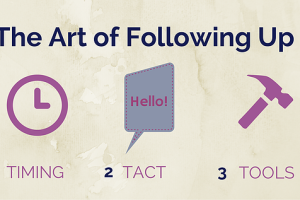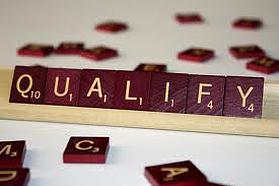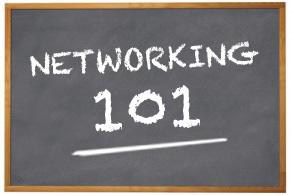People are judgmental, opinionated beings. We like to think that we are more rational than we really are. We tend to overestimate our intuition and we love to draw conclusions and make assumptions.
Think of your aunt who saw you drunk twice in your life. It did not take her long to assume you have alcohol issues and gossip about it to your family. But do not think that you are any better than your aunt. You are not. Most of us are not better than your aunt. Making assumptions is in our nature. People love to make connections simply because we need to be able to explain the world around us. Sometimes, we want to see connections so bad that we start creating them in our head.
Ever heard of cognitive bias?
It is a popular topic in the world of behavioral economics. It helps researchers understand how people make purchasing decisions. I personally love this topic very much and firmly believe that the world would be a smarter, better place if more people were aware of their own cognitive biases. This topic is especially important for all the sales reps reading this post because it will help you understand how you think and spot the mistakes you tend to make in the process.
So, what are they?
These are tendencies to think in certain ways which go against good judgment — irrational thinking patterns. For example, thinking that your team has to win the next game just because it lost the previous 5 when in fact — there is no logical reason why it should.
- Anchoring bias
Anchoring bias or focalism is our tendency to let the first information we hear color our attitude about the entire situation. For example, letting first impression affect our judgment of a person’s character is an example of anchoring bias. Sales reps should be particularly wary of this one when researching about a new prospect in preparation for a sales conversation. They might get anchored on the first info they found and base the whole sales conversation on it, when in fact the key to understanding the prospect’s needs was somewhere else – the sales rep just did not see it because they got anchored on the first thing they found!
So, always try to take a step back and ask yourself if you have indeed understood all your client’s needs, and check the evidence you based your judgment on. You cannot offer your prospects the right solution if you did not understand their situation in all its complexity.
- Confirmation bias
Confirmation bias is assessing new information about a specific situation, so that it agrees with what you already think about the situation. In other words — if you are searching for something, you will find it wherever you look.
If you originally thought that a prospect was interested in your offer and seemed likely to make the purchase, you might overlook subsequent signs which tell you that they are not interested any more. So, being certain in what you first detected, you miss out on all the other warning signs. Blind for these signs, you might even come across as pushy, thus closing all future doors to the purchase because, as we already discussed it once, nobody likes pushy salesmen.
- Clustering illusion
The clustering illusion refers to noticing a pattern in a completely random sequence of events. For example, an illustrative example of a clustering illusion is when a sales rep starts using one and the same sales script on all prospects, just because it worked on the last few prospects. The thinking error this sales rep is making is assuming that all future prospects are the same and that they will all react in the same way to one sales script.
While it is indeed great that one sales script got you great results with several clients, this is not a reason to assume that it always will. Although using just one script might be the easy way out for a lazy sales rep, personalization of the sales conversation still remains the biggest guarantee for success. Remember, clients want to talk to someone who can genuinely connect with them.
- Empathy gap
The empathy gap is when we cannot relate to someone else’s emotions because we are in a different emotional state. For example, we cannot understand that someone feels despondent when we are having a great day. Or the opposite – we get irritated by that chirpy friend because we are having a lousy day.
Being able to understand and connect with our prospect’s emotions is imperative for closing a sale — any good salesman knows the importance of emotions in making a purchasing decision. When sales reps and prospects are not emotionally attuned, the sale conversation can easily turn into a disaster.
To use the empathy gap to your gain, you need to become observant of other people’s emotions and moderate your own emotions and behaviors accordingly. For example, if you notice that your prospect is being particularly quiet and pensive, control your happiness and create rapport by acting in the same way.
- Curse of knowledge
The curse of knowledge is a cognitive bias which happens when a person who is more informed about the topic of conversation cannot maintain a successful conversation with the other, less-informed person simply because they cannot adapt to the other person’s perspective. Think of a nutritionist friend who starts explaining to you in great detail and technical terms the processes that happen in your body after you eat different nutrients when you only asked if eating an apple after a workout is okay.
In 1990, a student at the University of Stanford conducted an experiment to show just how great the curse of knowledge is. She divided the participants into two groups: tappers and listeners. The first group had a task to tap out a certain, famous song such as Happy Birthday, and the listener group was supposed to guess the song. During the experiment, 120 songs were tapped out and listeners guessed only 3 of them, which makes a 2.5% success rate. However, before guessing, the tappers were asked to estimate how many songs the listeners guessed. The reply was 50%, which means that according to tappers, listeners guessed every second song. Why were the tappers so confident that the success rate would be so much higher than it really was?
When you know something well, it seems obvious to you that everyone else knows it too and it becomes impossible for your mind to revert to understanding what it was like when you did not have the present knowledge. In other words, you become ‘cursed’ by your knowledge.
What are the implications for a sales rep? Don’t assume anything. Carefully monitor the lead’s body language and conversational cues – are they nodding in agreement or do they have a puzzled look in their eyes? If the latter is the case, go back, and start simple. Imagine you are talking to a child – when I say this, I do not mean to undermine you lead. It is simply better to assume they know nothing about your product than to omit sharing important information that converts.
- Gambler’s fallacy
The gambler’s fallacy is the belief that an event is less likely to happen in the future because it is happening frequently in the present. Such erroneous thinking can happen in many situations although it is most frequent among gamblers.
Now, let us imagine a sales rep who has had a bad calling streak. If they are affected by the gambler’s fallacy, they are likely to believe that because the last 5 calls were unsuccessful, his luck is bound to change with the next calls.
This bias is dangerous because it can lead sales reps into thinking that their luck will change on its own, without them doing anything to change it. So, instead of trying to understand why the bad streak is happening and employing different tactics in an attempt to counter it, the ‘affected’ sales rep will go on repeating the same approach thinking that their luck has to change.
Debiasing
So, how to eradicate cognitive biases? It is not easy because they tend to sneak in on us when we least expect it. Practicing awareness of why they happen is definitely the first step. Once we develop understanding of what they are, we will easily recognize them the next time they happen. And once we can recognize them, it will be easy to modify them into more rational patterns of thinking.
Here’s a good bias-buster exercise: start listening to people around you – your colleagues, friends, family members – and try spotting bias in their thinking. Once you start listening, you will be amazed at how ubiquitous they are.









Speak Your Mind